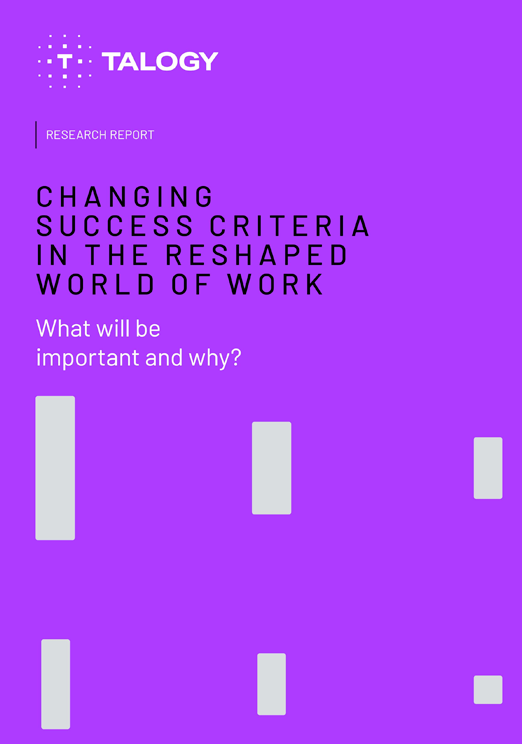With the number of jobs and applicants increasing, many professionals are turning to advanced tools such as personality assessments to aid them in the hiring process to determine if potential candidates are the right fit for their company. But what is a personality assessment?
When we talk about personality-based employment assessments, the message is often some variation of: Using a valid pre-employment assessment can help you dig deeper than resumes and interviews and discover which applicant has the intrinsic strengths and motivations to succeed in the role. According to Psychology Today, about 80% of Fortune 500 companies use personality tests to assess potential candidates during the hiring process. Many companies rely on personality tools to assist in making better hiring and developmental decisions.
That’s all true. But what happens when the results of the pre-employment assessment aren’t what you wanted to see? That is, what if your favorite candidate does not show the intrinsic motivations for the role?
Understand What You Need, Not What You Want
Finding the best candidate can be a very lengthy process, but taking the time to find the right candidate for the job is worthwhile and beneficial for your company in the long run.
Think of it like this. After screening dozens of applicants, you’re down to your final two. Before you select one, you present your candidates with a personality assessment to complete. First, there is Emily. During the interview stages of the hiring process, every time she was presented a question, she quickly replied with a well-crafted answer. You were impressed in her responses and the conversation continued to develop into a harmonious exchange. And then there is your second candidate, Sara. She looked great on paper, but during the interview, she stumbled around her words, trying to grasp and craft clear answers. You felt as if she wasn’t giving you anything. In the back of your mind, you thought she could do it, but she didn’t convince you.
You’ve received the results and suddenly noticed that Sara’s assessment results were much better suited to the job opening than Emily’s. Of course, there are roles that you may want to judge from the beginning of the hiring process, but at the end of the day, you want to find the most qualified candidate for the job.
Check out how the Caliper Profile uses scientifically-backed data and assessments to transform how companies hire talent.
Jessica Principale, Talent Management Consultant with Caliper, often finds herself advising clients on job applicants whose assessment results do not line up well with the position the client is trying to fill. “Those conversations can be challenging,” Jessica says. “I try to dig deeper into why they feel so strongly about the candidate. You have to relate to what they see in the results, but then use the instrument to uncover the behavioral tendencies that lie below the surface. Once I link the data to the day-to-day responsibilities of the job, most hiring managers will understand my perspective.”
To find your best candidates, it is important to understand that to get what you want, you have to know what you want. 75% of employers have hired the wrong person. From the beginning, setting clear expectations of the skills you need throughout the role can help better identify important behavioral traits and skills through an assessment.
But of course, job candidates are more than the results of a personality assessment. They are real people, and sometimes real people click with each other. Caliper would never say to a client, don’t hire this person. Even the best personality assessment is only part of the story. Still, it’s critical to take a long view.
Identifying Behavioral Competencies
There are many elements that are involved in making a job role attractive to a candidate. At the beginning and end of the process, hiring managers want to make sure that they are providing the best experience for their candidates through an engaging, impactful, personal connection. But is that truly enough?
According to Jessica, personally connecting with a job applicant and valuing their experiences can be important components of the hiring decision, but those elements do not necessarily indicate how the candidate would handle the unique responsibilities of the role over time. “At that point, I try to refocus the conversation on job tasks and relate them to the applicant’s intrinsic behavioral competencies,” Jessica adds.
Behavioral competencies emerge when personality attributes intersect with job responsibilities and on- the-key job performance, and they can be identified ahead of time through the use of a scientifically validated pre-employment assessment like the Caliper Profile. Whether or not an applicant’s assessment results show the key behavioral competencies associated with a certain job, Caliper wants its clients to get the most out of their new hires, even if hires don’t necessarily possess a high skill level at the beginning of their new role. You want to ensure that clients have an assessment that can support hiring and individual employee development.
“If the client decides to hire an applicant with results that do not line up well with the job, I try to ensure they are prepared for what they are getting,” Jessica says. “We talk in depth about the coaching areas, and I work with hiring managers to develop onboarding action plans. If issues do arise, they can always reach out to me, and we’ll brainstorm alternatives.”
It’s always better to be prepared for the unexpected, instead of struggling to find solutions to fix problems and gaps in the end.
What does Jessica say is most important in getting past the rough patches? “Communication and follow-up.” Good advice for anything in life, really.
Whether you need to fill a new position, find the right employees or improve talent gaps in your workforce, Caliper offers any organization, big or small, the right assessments to measure job performance. Contact us today to learn more about how you can transform your organization.

